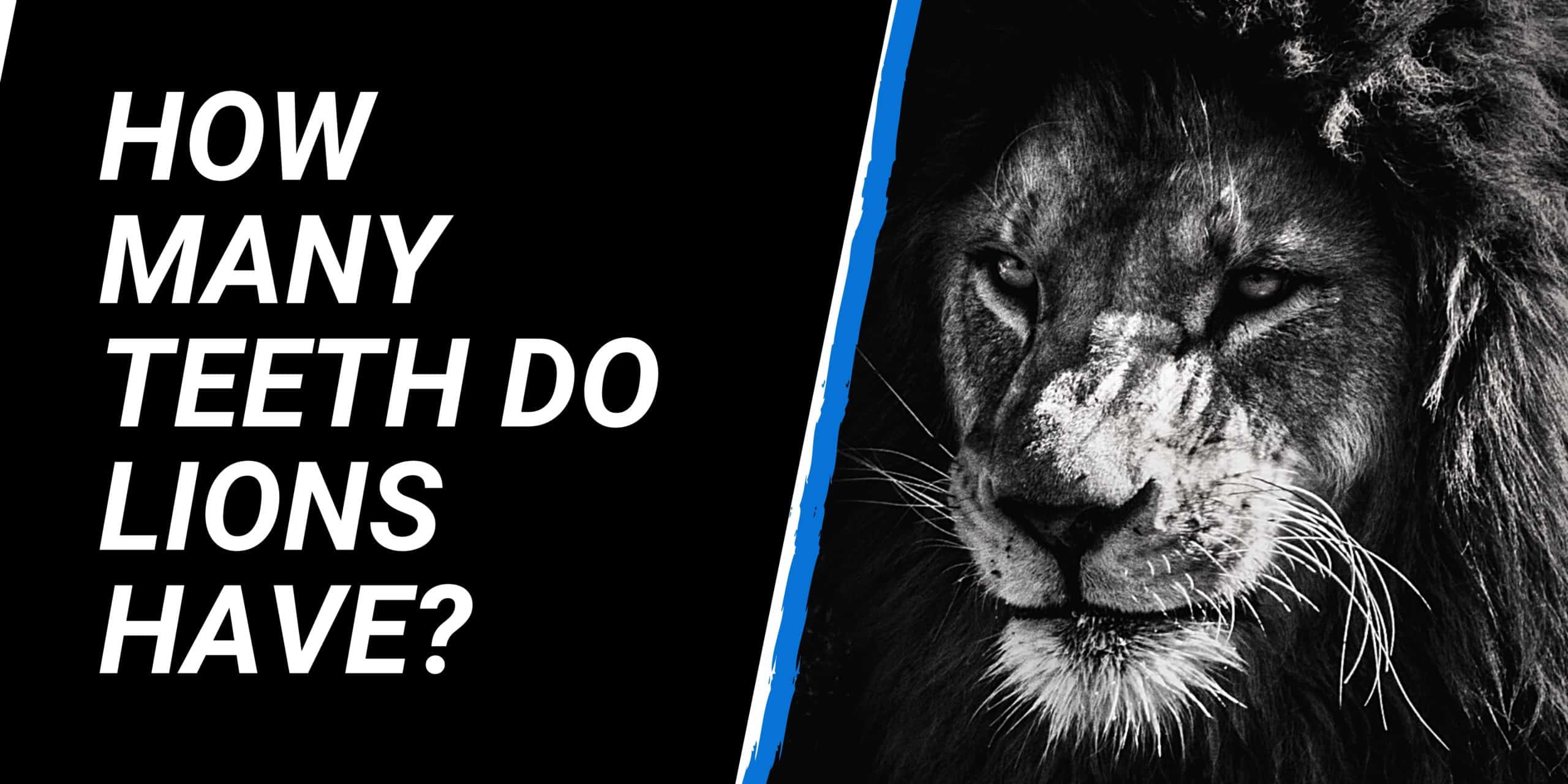Question: How many teeth do Lions have?
Lions have 30 teeth in total, made up of 3 different types: Incisors, Caines and Carnassial.
Each tooth has a specific function and has been developed over millions of years of evolution, just under 1.5 million years to be exact.
Let’s learn about Lions and their teeth
Nearly all Lions in the wild come from Africa; it was always like this. Lion’s used to live all over Africa, Asia and Europe; however they faced pressures from human hunting and habitation loss.
The Romans used to capture and use Lions for entertainment within their colosseums. This pressure led to the extinction of Lions within Italy.
The three types of teeth
Like humans, lions have different types of teeth.
Lets take a look at them and answer some more questions;
- What is each of the teeth used for?
- How do they use them?
- How do they compare with ours?
- How powerful is a Lion’s bite?
Canines
The most prominent teeth that lions possess are the Canines. These four large teeth sit next to the incisors at the front of the mouth.
So, how do lions use their Canines? Surprisingly, not for eating.
To kill their prey, Lions use a technique that involves stalking their prey until they get close enough to charge suddenly over a short distance. If successful, the Lion will either unbalance the animal, knock it over, or pull the target down. It is at this moment; the Canines come into play.
The Lion will clamp its jaws around the neck and bite down, crushing the windpipe and suffocating the unfortunate prey. The Teeth puncture the windpipe to increase the chance of a quick kill. These teeth then lock into place to secure the jaw around the animal’s throat to ensure it does not slip away. If the prey is small enough, the Lion can clamp its jaws around the muzzle, suffocating it. The more common way to kill is to crush the windpipe.
The most famous Canine teeth on a big cat belong to the Saber-tooth cats of the Eocene epoch, with impressive lengths of 20cm in length, possibly using them in the same manner as Lions do today.
The evolution of the Lion led to the canines being spaced far enough apart for the vertebrae of an animal to fit perfectly between them, allowing for a better grip and more chance of a successful kill.
We don’t use our canines in this manner, and we use them for tearing food like meats or vegetables and develop around the ages of 16 – 20 months, to then be replaced by their adult versions.
Incisors
The Incisors of lions are the smallest teeth that possess, sitting at the front of the mouth, in-between the Canines.
They are used whilst feeding, allowing the Lion to get more grip on the carcass. These teeth allow the lion extra pulling power, tearing and tugging meat from the kill.
These teeth also allow more delicate procedures to occur; the stomach is the most accessible entry point to the highly nutritious organs inside.
However, the stomach needs removing first, as a split stomach could taint the surrounding meat, making it inedible. These incisors allow the Lion to empty the stomach and carry on feeding.
Depending on how hungry the Lion is, it usually dictates whether the stomach lining gets eaten, the contents always disregarded. Our Incisors allow us to bite into our food, making chewing easier.
Carnassial
The last type is called Carnassial teeth, which in humans relates to our Molars and Premolars.
These teeth are used for eating, cutting up pieces of meat or slicing chunks from a kill. They work like scissors, being an effective way for the Lion to remove meat from a carcass.
Lions will often eat with the sides of their mouth, slicing through flesh, sinew and skin. We don’t use ours in this way. Our molars are relatively flat, allowing us to crush our food and chew, ready for swallowing.
These teeth enable the Lion even to eat bone if they’re small enough, allowing the lion access to the highly prized bone marrow inside.
Lion’s can’t break larger bones, so leave them. After a Lion pride finishes feeding, the bones, hoofs and horns, and the prey’s stomach contents are leftover. These are then consumed or broken open by other animals, such as hyenas or vultures.
How do Lions use their teeth?
Lions use their teeth in an ingenious way, which has evolved over millions of years to kill and process the meat for digestion effectively.
The combination of a bite force of around 650 psi (pound per square inch), large Canine teeth and hunting in groups allow lions to have a success rate of about 30%; this rate is more significant at night or with the presence of more lions.
This bite force isn’t a lot, as domestic cats have a slightly greater success rate at 32%. Maybe not the king of the jungle after all?
Frequently Asked Questions
People who ask ‘How many teeth do lions have?‘ also ask;
Do Lions teeth fall out?
Yes, like us, Lions have “Baby Teeth”, which are known as Deciduous teeth. These are replaced by the adult teeth around 3-month-old and aren’t entirely replaced until 13 to 15 months.
Who has bigger teeth: Lion or Tiger?
Tiger. Tigers canines can grow up to 7.8cm in length, whereas a Lion averages 7cm. Tigers also have a similar jaw, as the method of killing is identical for both lions and Tigers
Can Lions tongue rip your skin?
Yes, the tongue is covered in Papillae (domestic cats also have these), which evolved for stripping meat from the bone. A few licks would easily take your skin off.
How big are Lion’s teeth?
Their canines can reach impressive lengths, ranging up to 10cm in size, but on average, 7cm is more common, whereas ours only grows a mere 1.5cm in length on average.
